Chapter 144
Author’s Note: The following update will contain some ideas and concepts that contradict those mentioned previously on the timeline. I am aware of the discrepancies. Please consider anything mentioned here the “canon” version of events, unless mentioned elsewhere. Thank you!
“Oh, she said
Any way you want it
That's the way you need it
Any way you want it
She said, any way you want it
That's the way you need it
Any way you want it” - “Any Way You Want It” by Journey
"I can't really say that Sol [Harrison] and I had much of a working relationship. He, more than anybody, resented my being hired because he felt that the job [of publisher] was rightfully his.” - Jenette Kahn, on being made publisher of DC Comics in 1976.
"I don't have inspiration. I only have ideas. Ideas and deadlines." - Stan Lee
Informally, the period of comics history between 1970 and 1985 is generally referred to as “the Bronze Age” of comic books. The new era retained many of the conventions popularized in the previous “Silver Age”, including the ubiquity of superhero titles, which continued to dominate the market. Mirroring the change on tv and in film, however, comics in the 70s started to drift into darker plot elements. Storylines rooted in relevant social issues also became more prominent, including themes of racial inequality, drug use and abuse, and even sexuality and gender politics.
The beginning of the Bronze Age coincided with the end of the careers of many of the veteran writers and artists of the time, or their promotion to management positions and retirement from regular writing or drawing, and their replacement with a younger generation of editors and creators, many of whom knew each other from their experiences in comic book fan conventions and publications. At the same time, publishers began the era by scaling back on their superhero publications, canceling many of the weaker-selling titles, and experimenting with other genres such as horror and sword and sorcery.
In 1970, Marvel published the first comic book issue of Robert E. Howard's pulp character Conan the Barbarian. Conan's success as a comic hero resulted in adaptations of other Howard characters: King Kull, Red Sonja and Solomon Kane. DC Comics responded with comics featuring Warlord, Beowulf and Fritz Leiber's Fafhrd and the Gray Mouser. They also took over the licensing of Edgar Rice Burroughs's Tarzan from longtime publisher Gold Key and began adapting other Burroughs creations, such as John Carter, the Pellucidar series, and the Amtor series.
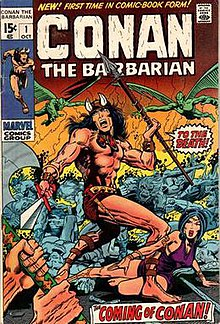
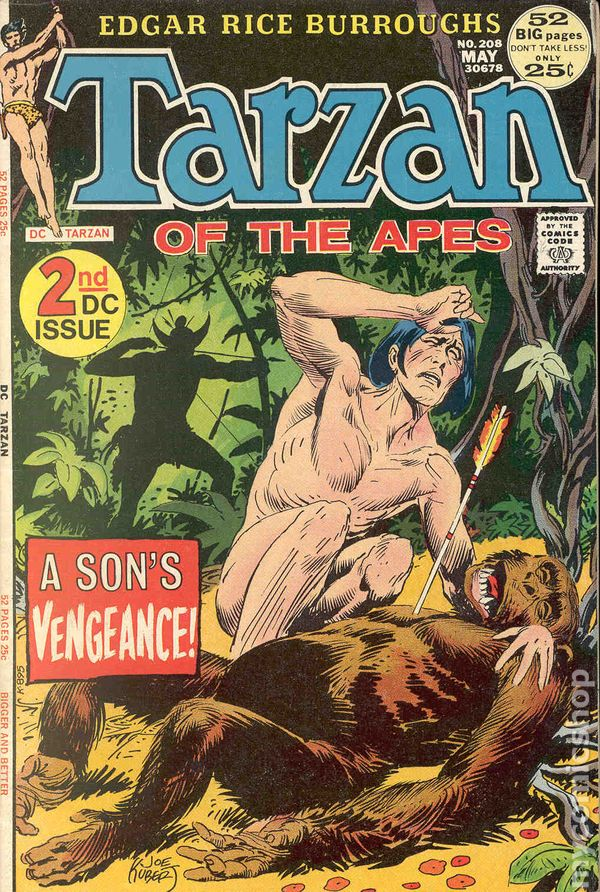
The 1971 revision to the Comics Code has also been seen as relaxing the rules on the use of vampires, ghouls and werewolves in comic books, allowing the growth of a number of supernatural- and horror-oriented titles, such as Swamp Thing at DC, and Ghost Rider and The Tomb of Dracula for Marvel, among numerous others. However, the tone of horror comic stories had already seen substantial changes between the relatively tame offerings of the early 1960s (e.g. Unusual Tales) and the more violent products available in the late 1960s (e.g. The Witching Hour, revised formats in House of Secrets, House of Mystery, and The Unexpected).
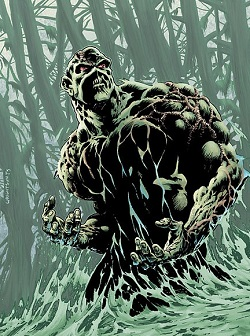
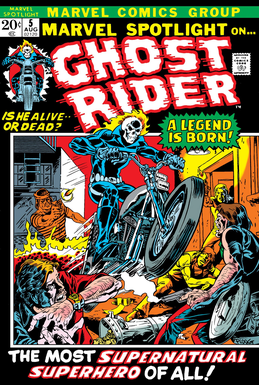
At the beginning of the 1970s, publishers moved away from the superhero stories that enjoyed mass-market popularity in the mid-1960s; DC canceled most of its superhero titles other than those starring Superman and Batman, while Marvel canceled weaker-selling titles such as Dr. Strange, the Sub-Mariner, and (for a time) The Mutants. In their place, they experimented with a wide variety of other genres, including Westerns, horror and monster stories, and the above-mentioned adaptations of pulp adventures. These trends peaked in the early 1970s, and the medium reverted by the mid-1970s to selling predominantly superhero titles.
The Mutants, for one, made a resurgent comeback in 1975, when a new version of the team was introduced in Giant-Size Mutants #1. In addition to the returning team from the 60s (Cyclops, Jean Grey, Beast, IceMan, and Angel), the new Mutants included such future fan-favorites as Storm/Ororo Munroe, Thunderbird/John Proudstar, Colossus/Piotr Nikolayevich Rasputin, and of course, Logan AKA Wolverine. These new characters injected much needed life into the title, and revitalized fan interest.
New dynamics also developed within the team.
Storm, with her upbringing as the daughter of a Kenyan princess and having previously been worshiped as a minor goddess, struggles to adjust to life in America, where she is greeted with prejudice on account of her race. Scott Summers/Cyclops, as an African-American man, helps her to adjust, beginning something of a love triangle between the two of them and Summers’ previous girlfriend, teammate Jean Grey. This later becomes more of a rectangle when brooding, loner Wolverine reveals that he also has feelings for Jean. Talk about drama! Meanwhile, Colossus and Thunderbird were both hailed as positive examples of representation for Russians and First Americans, respectively.
There is no one single event that can be said to herald the beginning of the Bronze Age. Instead, a number of events at the beginning of the 1970s, taken together, can be seen as a shift away from the tone of comics in the previous decade.
One such event was the April 1970 issue of Green Lantern, which added Green Arrow as a title character (Green Lantern/Green Arrow #76). The series, written by Denny O'Neil and penciled by Neal Adams (inking was by Dick Giordano), focused on "relevance" as Green Lantern was exposed to poverty and experienced self-doubt.
Another was Jack Kirby’s decision to stay with Marvel in 1970, rather than jump ship to their arch-competitor DC (As a consolation prize, DC did manage to hire away Steve Ditko, another of Marvel’s most celebrated artists). Convinced to stay by promises of greater pay, greater creative control over his output, and finally being given the recognition he deserved as more than just an artist (he was also a huge contributor to the writing and concept-creation side of the business), Kirby’s creative influence was definitely felt in Marvel’s output of the time.
According to artist Gil Kane:
“Jack was the single most influential figure in the turnaround in Marvel's fortunes from the time he rejoined the company ... It wasn't merely that Jack conceived most of the characters that are being done, but ... Jack's point of view and philosophy of drawing became the governing philosophy of the entire publishing company and, beyond the publishing company, of the entire field ... [Marvel took] Jack and use[d] him as a primer. They would get artists ... and they taught them the ABCs, which amounted to learning Jack Kirby ... Jack was like the Holy Scripture and they simply had to follow him without deviation. That's what was told to me ... It was how they taught everyone to reconcile all those opposing attitudes to one single master point of view.”
Increasingly, Kirby’s ideas ran in cosmological directions, influenced by mythology. He created groups such as The Inhumans and the Celestials, and shifted his focus toward metaphysical themes and questions. One of these new creations, Darkseid, would become one of Marvel’s most iconic villains, and arguably the chief villain for the Avengers.
Meanwhile, in 1971, the United States Department of Health, Education, and Welfare approached Marvel Comics editor-in-chief Stan Lee to do a comic book story about drug abuse. Lee agreed and wrote a three-part Spider-Man story portraying drug use as dangerous and unglamorous. However, the industry's self-censorship board, the Comics Code Authority, refused to approve the story because of the presence of narcotics, deeming the context of the story irrelevant. Lee, with Marvel founder and President Martin Goodman's approval, published the story regardless in The Amazing Spider-Man #96–98 (May–July 1971), without the Comics Code seal. The market reacted well to the storyline, and the CCA subsequently revised the Code the same year.
When Goodman retired as publisher the following year, most in the company felt that Stan Lee, who had become something of a mascot for Marvel, seemed to be his logical successor. But the company also needed a new president. And if Lee was going to take either of those jobs, he’d also need to hand off his responsibilities as editor-in-chief. Ultimately, Lee worked with the rest of the Marvel veterans to come up with a power sharing agreement that seemed as equitable as possible. Lee’s associate editor, Roy Thomas, would take Lee’s job as editor-in-chief. Lee would take Goodman’s role as president of the company, mostly serving a public relations role and watching the company’s financial futures. And finally, Jack Kirby, the reluctant company man, would serve as publisher. In that role, Kirby would be able to scout for and recruit a new generation of talent, as well as produce books, and make business decisions about which ones would be pushed, and so on. It was the kind of freedom and respect he’d always wanted. Though he and Lee would never have a perfect relationship, this triangle-shaped leadership seemed solid.
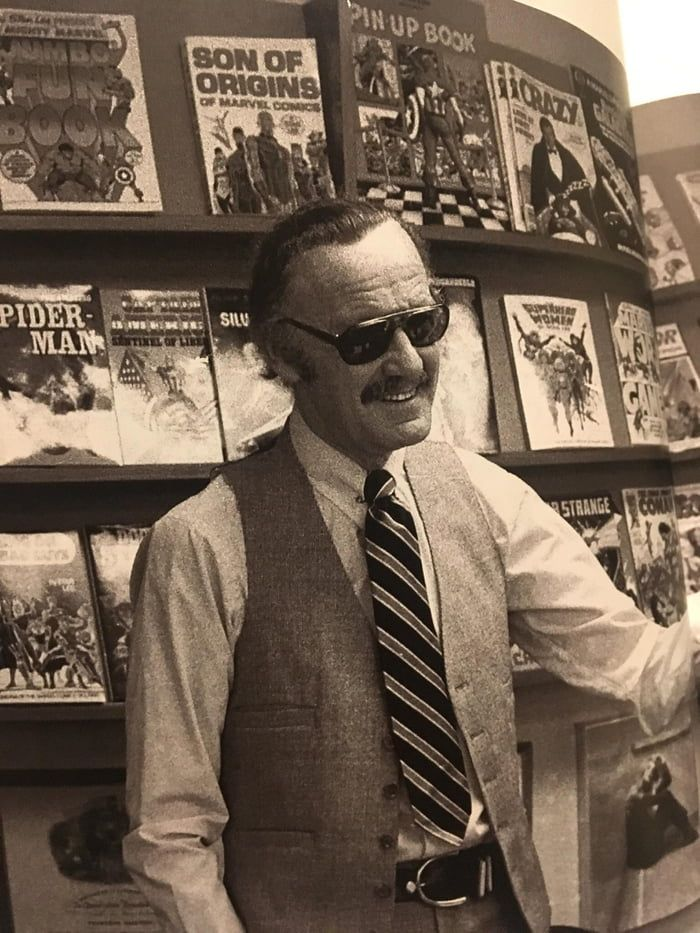

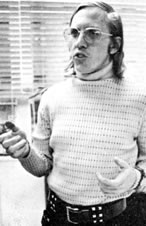
Above: Marvel’s new leadership team, beginning in 1972: Stan Lee as company president; Jack Kirby as publisher; Roy Thomas as editor-in-chief.
Another iconic moment that served to herald this shift in comics’ tone was the death of Aunt May Parker in The Amazing Spider-Man #121-122 in June-July of 1973.
Inker John Romita Sr. recalled in a later interview how the character to be killed off for what became “The Night Aunt May Died” was selected.
“We were running out of storylines for the status quo that had been established for the past several years. Peter was dating Gwen Stacy. He was taking care of and still living with his Aunt May. He was still in college. He had sort of a Betty-Veronica thing going on with Gwen and Mary Jane [Watson], but even that had started to run out of steam by ‘73. We’d done the ‘will they, won’t they’ thing. Either Peter was going to marry Gwen, or something had to give. We didn’t want to do that. Peter was only about twenty, maybe twenty-one. We didn’t think he was ready to get married, to settle down. So then, what to do? Everyone agreed that someone had to go.”
“We all met up - myself, Gerry [Conway, the lead writer on Amazing Spider-Man at that time], Roy [Thomas, editor-in-chief], Stan [Lee, co-creator of Spider-Man and president of Marvel], and Jack [Kirby, publisher] - at Gerry’s apartment for a big brainstorm, I guess. Roy came to the meeting with his mind made up. He wanted us to kill off Aunt May. He argued that we’d run some variation of her being ‘at death’s door’ too many times already, and that the fans were beginning to believe that she had ‘plot armor’. That we’d never kill her off, because she was Peter’s moral center. After losing Uncle Ben, she was the only parental figure left in his life. Take her off the board, and Peter could finally move on and grow up. Hero’s Journey. Forced out into the wilderness on their own. That sort of thing.”
“Gerry and I argued that this was precisely why we shouldn’t kill her off. If we did, then Peter would never have to worry about her again. That worry, that anxiety, is such a big part of his character. We agreed that we needed to change the status quo, but did we really want to go for that big of a change? I tried to pivot toward Gwen. Her storyline had reached its peak, and had served its purpose. Unless she and Peter were going to get married, why keep her around?”
“Jack, who’d been quiet for most of the meeting up to that point, spoke up and said he agreed with Roy. ‘We all have to grow up sometime.’ He said. ‘It’s not my title, but I think there’ll be backlash if you kill off Gwen. The fans love her. If you take away Aunt May, you leave Peter without guidance. He’s vulnerable, more insecure. You can have the bad guys take advantage of that vulnerability. There’s plenty of stories there. That could end their [Peter’s and Gwen’s] relationship, right there. He can’t handle the pressure. He goes off on his own for a while. Gets angry. Gets mean.”
“So there we were, tied at two apiece. All eyes went to Stan. He was the president of the company. Spider-Man was his baby, now that Steve [Ditko] was gone. He’d have to break the tie. He thought about it for a long moment, then sighed.”
“‘Aunt May.’ He said, finally. ‘We can explore what it’ll be like for Peter to have to grow up, at least a little. Imagine the panel where Peter graduates from Empire Statue University, and, having lost Aunt May and Uncle Ben, and pushed Gwen away in his grief, he’s all alone. No one there to celebrate with him.’ He shrugged. ‘If that isn’t Spider-Man, then I don’t know what is.’”
Against their initial wishes, Romita and Conway respected the team’s decision. The storyline went ahead, with the Green Goblin abducting Aunt May, and throwing her off of the George Washington Bridge. Peter attempts to save her with his webs, but winds up accidentally killing her from whiplash. The Green Goblin escapes, and Spider-Man cries over May’s body and swears revenge. In the following issue, he tracks the Goblin to a warehouse and beats him, but cannot bring himself to kill him. The Goblin uses the opportunity to send his glider to impale Spider-Man from behind. Warned by his spider-sense, Spider-Man dodges, and the glider instead impales the Green Goblin, seemingly killing him. Later, a devastated Parker, back at home, encounters an equally shocked and saddened Gwen, who relives the pain and anguish that she felt at the death of her own father, NYPD captain George Stacy (Amazing Spider-Man #90). She tries to comfort Peter, but he asks her to leave.
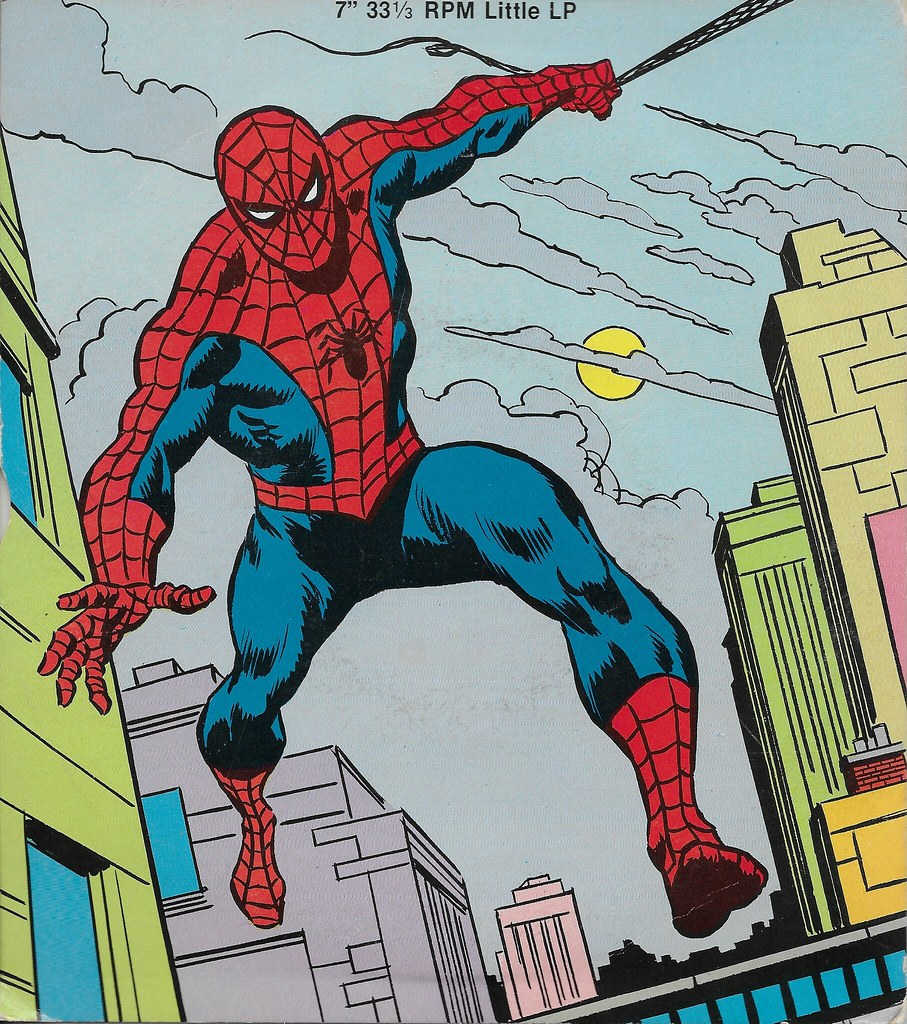
The decision to more or less permanently kill off such a central character to the Spider-Man saga was not without its controversy. Generally, fans accepted the death as a natural progression of Peter’s story. It also served to heighten the tension and drama of Peter’s double life, while at the same time absolutely cementing the Green Goblin’s status as Spider-Man’s arch-nemesis (especially when it was later revealed that he had survived the impaling from his glider). The violent nature of May’s death resulted in some hand-wringing by moralist types. But all in all, it was widely seen as the right decision.
Following up on Harry Osborne’s descent into drug addiction and Aunt May’s death, the next major storyline in The Amazing Spider-Man introduced a Cambodian War vet-turned vigilante, Frank Castle AKA the Punisher, one of Marvel’s most enduring and popular villains for both the web head and his fellow street-level hero, Daredevil. From there, the 70s would see the book follow Lee’s plan for a “slight age up” to the wall-crawler. Still in his early 20s, Peter Parker would indeed graduate from ESU, though this would make his life more, not less complicated. He began work on a doctorate while still having to pay his mortgage (having inherited Aunt May and Uncle Ben’s home in Forest Hills), so he works a series of day jobs (a high-school biology teacher in Midtown Manhattan, photographer for the Daily Bugle, etc.).
To keep Peter’s love life interesting, Mary Jane Watson’s character was deepened, turning her from a shallow party-girl into a deeper, more high-minded character, with a bent toward social justice. Whereas Peter could relate to Gwen for her nerdiness, their shared love of science, and their childhood closeness, he could relate to MJ for her concern for the wider world. Ms. Watson eventually gets a degree in Journalism and becomes a reporter for the Daily Bugle. Finally, a third love-interest, Felicia Hardy/Black Cat, would be introduced in 1979. She represented the "dark side" of Peter's double life - the fun of dressing up in a costume and of being Spider-Man, the abdication of his other responsibilities.
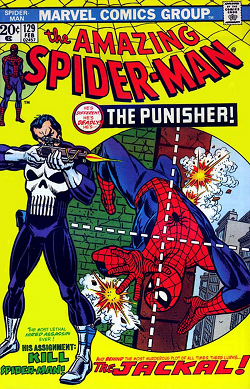
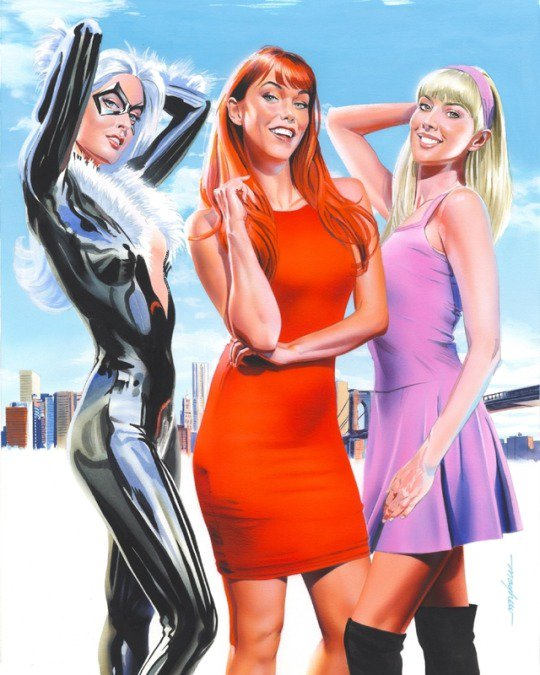
…
Meanwhile, at DC, attempts were likewise made to create a more grounded, naturalistic tone in their iconic publications. Jenette Kahn, a former children's magazine publisher, replaced Carmine Infantino as editorial director in January of 1976.
As it happened, her first task even before being formally hired, was to convince Bill Sarnoff, the head of Warner Publishing, to keep DC as a publishing concern, as opposed to simply managing their licensing of their properties. With that established, DC had attempted to compete with the now-surging Marvel by dramatically increasing its output and attempting to win the market by flooding it. This included launching series featuring such new characters as Shade, the Changing Man (created by Steve Ditko), as well as an increasing array of non-superhero titles, in an attempt to recapture the pre-Wertham days of post-War comicdom.
The strategy, though not entirely successful, did help keep DC in the running long enough for the next phase of Kahn’s plan: branching out into other media. The Wonder Woman television series starring Lynda Carter, and 1978’s Superman, starring Christopher Reeve, Carrie Fisher, and Gene Hackman, helped introduce two of DC’s most popular characters to a new generation of fans and a wider, more general tv-viewing and movie-going audience. Sales of both characters’ comics increased, as did sales for tie-in merchandise, like apparel, toys, and games. Taking a cue from George Lucas’ Star Wars, DC and its parent company, Warner Brothers, understood that merchandising and later, home video, were huge potential markets for their intellectual property to tap into. Preparations were made for a second Superman film, to be released in 1980, and a Wonder Woman film, to wrap up unfinished storylines from the show, in 1981.
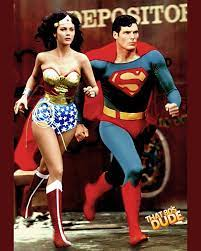
Above: Promotional still featuring Lynda Carter as Wonder Woman and Christopher Reeve as Superman.
On the comics/publishing side of things, DC went for simplification under the watchful eyes of Joe Kubert, Dick Giordano, Neal Adams, and Steve Ditko. For one thing, Superman’s powers, which had grown almost exponentially in both scale and scope over the past decades, began to be reined in. As did what Ditko took to calling the “wacky factor”. For years, he argued, Marvel had been beating DC in popularity and sales because of lackluster characterization and storytelling. While Marvel told grounded, approachable stories about characters that readers could relate to, DC felt stuck in a hokey past, by comparison. This had to change.
One title that benefited majorly from this new direction at DC was Teen Titans. Revitalized from its earlier, Silver Age run, a new iteration of the Titans was put together, consisting of Dick Grayson/Robin as the team’s leader; Starfire/Koriand'r, an alien princess from Tamaran; Beast Boy, a shapeshifting hero also known as “the Changeling”; Raven, a half-demon empath and sorceress (who would skyrocket in popularity with the growth of the “Goth” subculture); and introducing Cyborg/Victor Stone, a half-human, half-robot hero who would serve as the team’s “heavy”. This new version of the team proved a hit with audiences, who approved of the relatability and authenticity of the series’ dialogue and conflicts.

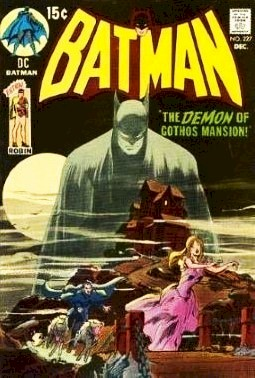
Meanwhile, starting in 1969, writer Dennis O'Neil and artist Neal Adams made a deliberate effort to distance Batman from the campy portrayal of the 1960s TV series and to return the character to his roots as a "grim avenger of the night". O'Neil said his idea was "simply to take it back to where it started. I went to the DC library and read some of the early stories. I tried to get a sense of what Kane and Finger were after.”
Dick Giordano said: "We went back to a grimmer, darker Batman, and I think that's why these stories did so well ..."
While the work of O'Neil and Adams was popular with fans, the acclaim did little to improve declining sales; the same held true with a similarly acclaimed run by writer Steve Englehart and penciler Marshall Rogers in Detective Comics #471–476 (August, 1977 – April, 1978), which went on to influence the 1985 movie Batman (directed by Tim Burton and starred the then relatively unknown Willem Dafoe), and was adapted for Batman: The Animated Series, which debuted in 1989. Regardless, circulation continued to drop through the 1970s and 1980s, hitting an all-time low in 1984.
Chapter 144 - Any Way You Want It: The Bronze Age of Comic Books
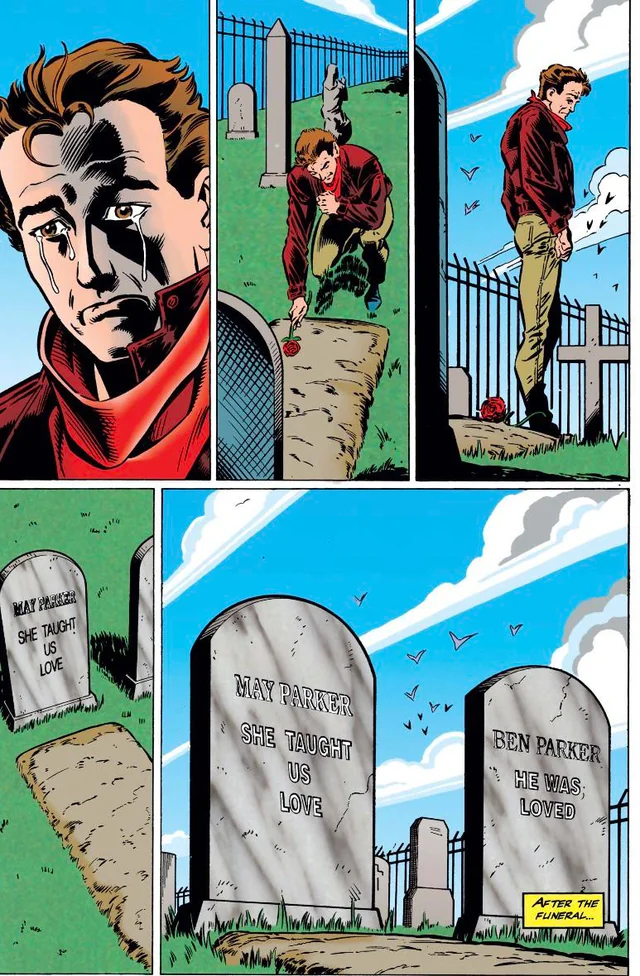
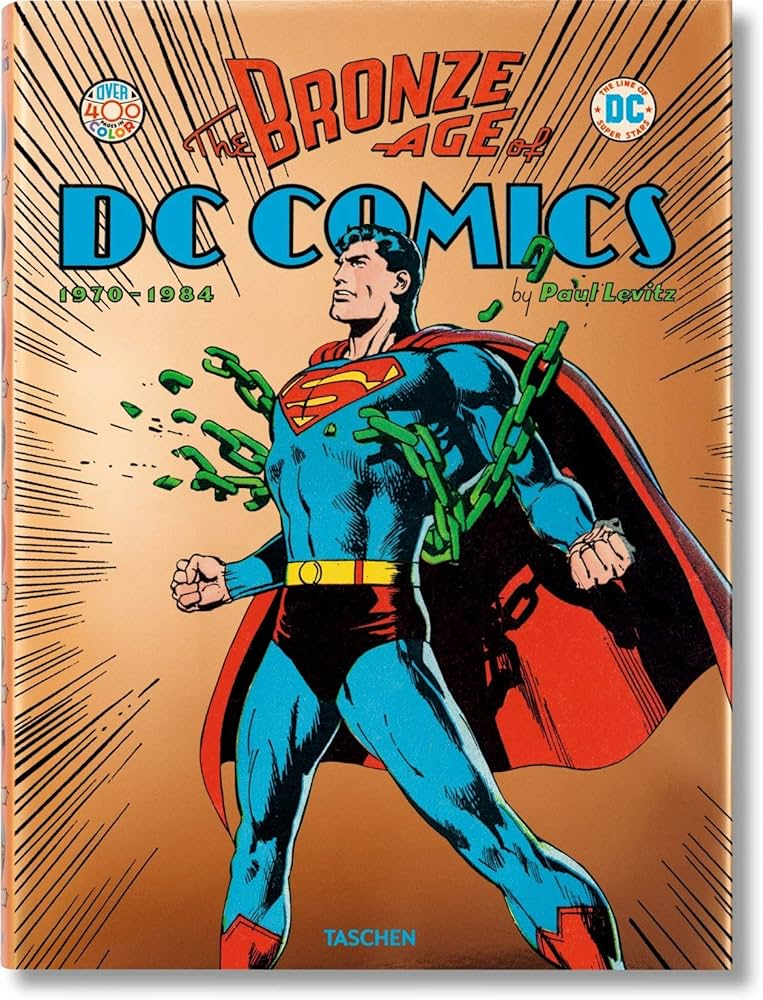
Above: “The Night Aunt May Died”, one of the most iconic (and divisive) storylines in the history of The Amazing Spider-Man; Superman, arguably the most popular superhero of them all, who underwent significant simplification in the Bronze Age.“Oh, she said
Any way you want it
That's the way you need it
Any way you want it
She said, any way you want it
That's the way you need it
Any way you want it” - “Any Way You Want It” by Journey
"I can't really say that Sol [Harrison] and I had much of a working relationship. He, more than anybody, resented my being hired because he felt that the job [of publisher] was rightfully his.” - Jenette Kahn, on being made publisher of DC Comics in 1976.
"I don't have inspiration. I only have ideas. Ideas and deadlines." - Stan Lee
Informally, the period of comics history between 1970 and 1985 is generally referred to as “the Bronze Age” of comic books. The new era retained many of the conventions popularized in the previous “Silver Age”, including the ubiquity of superhero titles, which continued to dominate the market. Mirroring the change on tv and in film, however, comics in the 70s started to drift into darker plot elements. Storylines rooted in relevant social issues also became more prominent, including themes of racial inequality, drug use and abuse, and even sexuality and gender politics.
The beginning of the Bronze Age coincided with the end of the careers of many of the veteran writers and artists of the time, or their promotion to management positions and retirement from regular writing or drawing, and their replacement with a younger generation of editors and creators, many of whom knew each other from their experiences in comic book fan conventions and publications. At the same time, publishers began the era by scaling back on their superhero publications, canceling many of the weaker-selling titles, and experimenting with other genres such as horror and sword and sorcery.
In 1970, Marvel published the first comic book issue of Robert E. Howard's pulp character Conan the Barbarian. Conan's success as a comic hero resulted in adaptations of other Howard characters: King Kull, Red Sonja and Solomon Kane. DC Comics responded with comics featuring Warlord, Beowulf and Fritz Leiber's Fafhrd and the Gray Mouser. They also took over the licensing of Edgar Rice Burroughs's Tarzan from longtime publisher Gold Key and began adapting other Burroughs creations, such as John Carter, the Pellucidar series, and the Amtor series.
The 1971 revision to the Comics Code has also been seen as relaxing the rules on the use of vampires, ghouls and werewolves in comic books, allowing the growth of a number of supernatural- and horror-oriented titles, such as Swamp Thing at DC, and Ghost Rider and The Tomb of Dracula for Marvel, among numerous others. However, the tone of horror comic stories had already seen substantial changes between the relatively tame offerings of the early 1960s (e.g. Unusual Tales) and the more violent products available in the late 1960s (e.g. The Witching Hour, revised formats in House of Secrets, House of Mystery, and The Unexpected).
At the beginning of the 1970s, publishers moved away from the superhero stories that enjoyed mass-market popularity in the mid-1960s; DC canceled most of its superhero titles other than those starring Superman and Batman, while Marvel canceled weaker-selling titles such as Dr. Strange, the Sub-Mariner, and (for a time) The Mutants. In their place, they experimented with a wide variety of other genres, including Westerns, horror and monster stories, and the above-mentioned adaptations of pulp adventures. These trends peaked in the early 1970s, and the medium reverted by the mid-1970s to selling predominantly superhero titles.
The Mutants, for one, made a resurgent comeback in 1975, when a new version of the team was introduced in Giant-Size Mutants #1. In addition to the returning team from the 60s (Cyclops, Jean Grey, Beast, IceMan, and Angel), the new Mutants included such future fan-favorites as Storm/Ororo Munroe, Thunderbird/John Proudstar, Colossus/Piotr Nikolayevich Rasputin, and of course, Logan AKA Wolverine. These new characters injected much needed life into the title, and revitalized fan interest.
New dynamics also developed within the team.
Storm, with her upbringing as the daughter of a Kenyan princess and having previously been worshiped as a minor goddess, struggles to adjust to life in America, where she is greeted with prejudice on account of her race. Scott Summers/Cyclops, as an African-American man, helps her to adjust, beginning something of a love triangle between the two of them and Summers’ previous girlfriend, teammate Jean Grey. This later becomes more of a rectangle when brooding, loner Wolverine reveals that he also has feelings for Jean. Talk about drama! Meanwhile, Colossus and Thunderbird were both hailed as positive examples of representation for Russians and First Americans, respectively.
…
There is no one single event that can be said to herald the beginning of the Bronze Age. Instead, a number of events at the beginning of the 1970s, taken together, can be seen as a shift away from the tone of comics in the previous decade.
One such event was the April 1970 issue of Green Lantern, which added Green Arrow as a title character (Green Lantern/Green Arrow #76). The series, written by Denny O'Neil and penciled by Neal Adams (inking was by Dick Giordano), focused on "relevance" as Green Lantern was exposed to poverty and experienced self-doubt.
Another was Jack Kirby’s decision to stay with Marvel in 1970, rather than jump ship to their arch-competitor DC (As a consolation prize, DC did manage to hire away Steve Ditko, another of Marvel’s most celebrated artists). Convinced to stay by promises of greater pay, greater creative control over his output, and finally being given the recognition he deserved as more than just an artist (he was also a huge contributor to the writing and concept-creation side of the business), Kirby’s creative influence was definitely felt in Marvel’s output of the time.
According to artist Gil Kane:
“Jack was the single most influential figure in the turnaround in Marvel's fortunes from the time he rejoined the company ... It wasn't merely that Jack conceived most of the characters that are being done, but ... Jack's point of view and philosophy of drawing became the governing philosophy of the entire publishing company and, beyond the publishing company, of the entire field ... [Marvel took] Jack and use[d] him as a primer. They would get artists ... and they taught them the ABCs, which amounted to learning Jack Kirby ... Jack was like the Holy Scripture and they simply had to follow him without deviation. That's what was told to me ... It was how they taught everyone to reconcile all those opposing attitudes to one single master point of view.”
Increasingly, Kirby’s ideas ran in cosmological directions, influenced by mythology. He created groups such as The Inhumans and the Celestials, and shifted his focus toward metaphysical themes and questions. One of these new creations, Darkseid, would become one of Marvel’s most iconic villains, and arguably the chief villain for the Avengers.
Meanwhile, in 1971, the United States Department of Health, Education, and Welfare approached Marvel Comics editor-in-chief Stan Lee to do a comic book story about drug abuse. Lee agreed and wrote a three-part Spider-Man story portraying drug use as dangerous and unglamorous. However, the industry's self-censorship board, the Comics Code Authority, refused to approve the story because of the presence of narcotics, deeming the context of the story irrelevant. Lee, with Marvel founder and President Martin Goodman's approval, published the story regardless in The Amazing Spider-Man #96–98 (May–July 1971), without the Comics Code seal. The market reacted well to the storyline, and the CCA subsequently revised the Code the same year.
When Goodman retired as publisher the following year, most in the company felt that Stan Lee, who had become something of a mascot for Marvel, seemed to be his logical successor. But the company also needed a new president. And if Lee was going to take either of those jobs, he’d also need to hand off his responsibilities as editor-in-chief. Ultimately, Lee worked with the rest of the Marvel veterans to come up with a power sharing agreement that seemed as equitable as possible. Lee’s associate editor, Roy Thomas, would take Lee’s job as editor-in-chief. Lee would take Goodman’s role as president of the company, mostly serving a public relations role and watching the company’s financial futures. And finally, Jack Kirby, the reluctant company man, would serve as publisher. In that role, Kirby would be able to scout for and recruit a new generation of talent, as well as produce books, and make business decisions about which ones would be pushed, and so on. It was the kind of freedom and respect he’d always wanted. Though he and Lee would never have a perfect relationship, this triangle-shaped leadership seemed solid.
Above: Marvel’s new leadership team, beginning in 1972: Stan Lee as company president; Jack Kirby as publisher; Roy Thomas as editor-in-chief.
Another iconic moment that served to herald this shift in comics’ tone was the death of Aunt May Parker in The Amazing Spider-Man #121-122 in June-July of 1973.
Inker John Romita Sr. recalled in a later interview how the character to be killed off for what became “The Night Aunt May Died” was selected.
“We were running out of storylines for the status quo that had been established for the past several years. Peter was dating Gwen Stacy. He was taking care of and still living with his Aunt May. He was still in college. He had sort of a Betty-Veronica thing going on with Gwen and Mary Jane [Watson], but even that had started to run out of steam by ‘73. We’d done the ‘will they, won’t they’ thing. Either Peter was going to marry Gwen, or something had to give. We didn’t want to do that. Peter was only about twenty, maybe twenty-one. We didn’t think he was ready to get married, to settle down. So then, what to do? Everyone agreed that someone had to go.”
“We all met up - myself, Gerry [Conway, the lead writer on Amazing Spider-Man at that time], Roy [Thomas, editor-in-chief], Stan [Lee, co-creator of Spider-Man and president of Marvel], and Jack [Kirby, publisher] - at Gerry’s apartment for a big brainstorm, I guess. Roy came to the meeting with his mind made up. He wanted us to kill off Aunt May. He argued that we’d run some variation of her being ‘at death’s door’ too many times already, and that the fans were beginning to believe that she had ‘plot armor’. That we’d never kill her off, because she was Peter’s moral center. After losing Uncle Ben, she was the only parental figure left in his life. Take her off the board, and Peter could finally move on and grow up. Hero’s Journey. Forced out into the wilderness on their own. That sort of thing.”
“Gerry and I argued that this was precisely why we shouldn’t kill her off. If we did, then Peter would never have to worry about her again. That worry, that anxiety, is such a big part of his character. We agreed that we needed to change the status quo, but did we really want to go for that big of a change? I tried to pivot toward Gwen. Her storyline had reached its peak, and had served its purpose. Unless she and Peter were going to get married, why keep her around?”
“Jack, who’d been quiet for most of the meeting up to that point, spoke up and said he agreed with Roy. ‘We all have to grow up sometime.’ He said. ‘It’s not my title, but I think there’ll be backlash if you kill off Gwen. The fans love her. If you take away Aunt May, you leave Peter without guidance. He’s vulnerable, more insecure. You can have the bad guys take advantage of that vulnerability. There’s plenty of stories there. That could end their [Peter’s and Gwen’s] relationship, right there. He can’t handle the pressure. He goes off on his own for a while. Gets angry. Gets mean.”
“So there we were, tied at two apiece. All eyes went to Stan. He was the president of the company. Spider-Man was his baby, now that Steve [Ditko] was gone. He’d have to break the tie. He thought about it for a long moment, then sighed.”
“‘Aunt May.’ He said, finally. ‘We can explore what it’ll be like for Peter to have to grow up, at least a little. Imagine the panel where Peter graduates from Empire Statue University, and, having lost Aunt May and Uncle Ben, and pushed Gwen away in his grief, he’s all alone. No one there to celebrate with him.’ He shrugged. ‘If that isn’t Spider-Man, then I don’t know what is.’”
Against their initial wishes, Romita and Conway respected the team’s decision. The storyline went ahead, with the Green Goblin abducting Aunt May, and throwing her off of the George Washington Bridge. Peter attempts to save her with his webs, but winds up accidentally killing her from whiplash. The Green Goblin escapes, and Spider-Man cries over May’s body and swears revenge. In the following issue, he tracks the Goblin to a warehouse and beats him, but cannot bring himself to kill him. The Goblin uses the opportunity to send his glider to impale Spider-Man from behind. Warned by his spider-sense, Spider-Man dodges, and the glider instead impales the Green Goblin, seemingly killing him. Later, a devastated Parker, back at home, encounters an equally shocked and saddened Gwen, who relives the pain and anguish that she felt at the death of her own father, NYPD captain George Stacy (Amazing Spider-Man #90). She tries to comfort Peter, but he asks her to leave.
The decision to more or less permanently kill off such a central character to the Spider-Man saga was not without its controversy. Generally, fans accepted the death as a natural progression of Peter’s story. It also served to heighten the tension and drama of Peter’s double life, while at the same time absolutely cementing the Green Goblin’s status as Spider-Man’s arch-nemesis (especially when it was later revealed that he had survived the impaling from his glider). The violent nature of May’s death resulted in some hand-wringing by moralist types. But all in all, it was widely seen as the right decision.
Following up on Harry Osborne’s descent into drug addiction and Aunt May’s death, the next major storyline in The Amazing Spider-Man introduced a Cambodian War vet-turned vigilante, Frank Castle AKA the Punisher, one of Marvel’s most enduring and popular villains for both the web head and his fellow street-level hero, Daredevil. From there, the 70s would see the book follow Lee’s plan for a “slight age up” to the wall-crawler. Still in his early 20s, Peter Parker would indeed graduate from ESU, though this would make his life more, not less complicated. He began work on a doctorate while still having to pay his mortgage (having inherited Aunt May and Uncle Ben’s home in Forest Hills), so he works a series of day jobs (a high-school biology teacher in Midtown Manhattan, photographer for the Daily Bugle, etc.).
To keep Peter’s love life interesting, Mary Jane Watson’s character was deepened, turning her from a shallow party-girl into a deeper, more high-minded character, with a bent toward social justice. Whereas Peter could relate to Gwen for her nerdiness, their shared love of science, and their childhood closeness, he could relate to MJ for her concern for the wider world. Ms. Watson eventually gets a degree in Journalism and becomes a reporter for the Daily Bugle. Finally, a third love-interest, Felicia Hardy/Black Cat, would be introduced in 1979. She represented the "dark side" of Peter's double life - the fun of dressing up in a costume and of being Spider-Man, the abdication of his other responsibilities.
…
Meanwhile, at DC, attempts were likewise made to create a more grounded, naturalistic tone in their iconic publications. Jenette Kahn, a former children's magazine publisher, replaced Carmine Infantino as editorial director in January of 1976.
As it happened, her first task even before being formally hired, was to convince Bill Sarnoff, the head of Warner Publishing, to keep DC as a publishing concern, as opposed to simply managing their licensing of their properties. With that established, DC had attempted to compete with the now-surging Marvel by dramatically increasing its output and attempting to win the market by flooding it. This included launching series featuring such new characters as Shade, the Changing Man (created by Steve Ditko), as well as an increasing array of non-superhero titles, in an attempt to recapture the pre-Wertham days of post-War comicdom.
The strategy, though not entirely successful, did help keep DC in the running long enough for the next phase of Kahn’s plan: branching out into other media. The Wonder Woman television series starring Lynda Carter, and 1978’s Superman, starring Christopher Reeve, Carrie Fisher, and Gene Hackman, helped introduce two of DC’s most popular characters to a new generation of fans and a wider, more general tv-viewing and movie-going audience. Sales of both characters’ comics increased, as did sales for tie-in merchandise, like apparel, toys, and games. Taking a cue from George Lucas’ Star Wars, DC and its parent company, Warner Brothers, understood that merchandising and later, home video, were huge potential markets for their intellectual property to tap into. Preparations were made for a second Superman film, to be released in 1980, and a Wonder Woman film, to wrap up unfinished storylines from the show, in 1981.
Above: Promotional still featuring Lynda Carter as Wonder Woman and Christopher Reeve as Superman.
On the comics/publishing side of things, DC went for simplification under the watchful eyes of Joe Kubert, Dick Giordano, Neal Adams, and Steve Ditko. For one thing, Superman’s powers, which had grown almost exponentially in both scale and scope over the past decades, began to be reined in. As did what Ditko took to calling the “wacky factor”. For years, he argued, Marvel had been beating DC in popularity and sales because of lackluster characterization and storytelling. While Marvel told grounded, approachable stories about characters that readers could relate to, DC felt stuck in a hokey past, by comparison. This had to change.
One title that benefited majorly from this new direction at DC was Teen Titans. Revitalized from its earlier, Silver Age run, a new iteration of the Titans was put together, consisting of Dick Grayson/Robin as the team’s leader; Starfire/Koriand'r, an alien princess from Tamaran; Beast Boy, a shapeshifting hero also known as “the Changeling”; Raven, a half-demon empath and sorceress (who would skyrocket in popularity with the growth of the “Goth” subculture); and introducing Cyborg/Victor Stone, a half-human, half-robot hero who would serve as the team’s “heavy”. This new version of the team proved a hit with audiences, who approved of the relatability and authenticity of the series’ dialogue and conflicts.
Meanwhile, starting in 1969, writer Dennis O'Neil and artist Neal Adams made a deliberate effort to distance Batman from the campy portrayal of the 1960s TV series and to return the character to his roots as a "grim avenger of the night". O'Neil said his idea was "simply to take it back to where it started. I went to the DC library and read some of the early stories. I tried to get a sense of what Kane and Finger were after.”
Dick Giordano said: "We went back to a grimmer, darker Batman, and I think that's why these stories did so well ..."
While the work of O'Neil and Adams was popular with fans, the acclaim did little to improve declining sales; the same held true with a similarly acclaimed run by writer Steve Englehart and penciler Marshall Rogers in Detective Comics #471–476 (August, 1977 – April, 1978), which went on to influence the 1985 movie Batman (directed by Tim Burton and starred the then relatively unknown Willem Dafoe), and was adapted for Batman: The Animated Series, which debuted in 1989. Regardless, circulation continued to drop through the 1970s and 1980s, hitting an all-time low in 1984.
Next Time on Blue Skies in Camelot: Special Pop Culture Update - The Making of The Empire Strikes Back
Last edited: